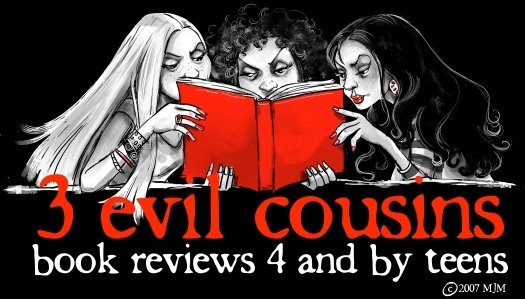 WARNING: The following review contains spoilers of Skin Hunger, the first book in this series. If you have not read Skin Hunger, dash off to your local library as fast as you can and read it! Then you may read this review, and subsequently Sacred Scars, at your leisure.
WARNING: The following review contains spoilers of Skin Hunger, the first book in this series. If you have not read Skin Hunger, dash off to your local library as fast as you can and read it! Then you may read this review, and subsequently Sacred Scars, at your leisure.When we left Sadima at the end of Skin Hunger, she, Franklin, and Somiss were in a cave with several orphan boys, kidnapped from Limori. Sadima is miserable living in the cave. She feels the fear and loneliness of the trapped boys, whom Somiss forces to learn how to copy the Gypsy symbols. Somiss is even more reclusive- and yet somehow even more frightening- than before. Worst of all, Franklin is gone all night, stealing food, and asleep all day, so Sadima has almost no time with him. As more and more time passes, she realizes that maybe he doesn’t even love her anymore. And slowly, she realizes something she knew all along. She cannot stay in this cave. She must escape.
Hahp, at the end of Skin Hunger, had made a pact with his roommate Gerrard to destroy the academy at all costs. They both realized the danger of their agreement, and as their fragile almost-friendship teeters on the verge of breaking, it seems to Hahp that Gerrard isn’t keeping his end of the deal. But that is far from being the boys’ only problem. As their lessons become more and more difficult, life becomes more painful. The wizards are acting even more strangely. Hahp’s sleep is haunted by dreams that blur the lines between fantasy and reality. Worst of all, the safety of all the boys is threatened by the violent, unpredictable, and dying Luke. As the pact between Gerrard and Hahp expands to include the rest of the boys, they are forced to make the most difficult choices of their lives. And as the connection between the story’s two plots becomes more apparent, the eternal question still nags at the reader: where is Sadima?
This book most definitely lived up to the precedent set for it by Skin Hunger. Although Sadima’s story lagged somewhat in the beginning of the book and at certain points throughout, most of that plotline, and all of Hahp’s, moved at a fairly brisk pace. There were numerous plot twists and unexpected events sprinkled throughout to keep the story moving.
Hahp’s story was definitely the more engaging of the two plots. There was so much story material there, weaving a rich, detailed plot, and as always, Hahp is a realistic and dynamic character. But this should not be taken to mean that Sadima’s story was not also compelling; on the contrary, since the action progressed somewhat more slowly for most of the book, it provided a nice complement to the tension of Hahp’s story, building up to the dramatic climax and cliffhanger ending in both cases.
Overall, Sacred Scars is a fabulous second installment in the Resurrection of Magic trilogy; I’m anxious for the conclusion. Four and a half magical daggers.

Yours in suspense,
Tay









 nd heartbreaking story of a foster child, fourteen books, many colors, an accordion, death, a Jewish fist fighter, a basement, two wars, a kiss, and a boy with hair the color of lemons.
nd heartbreaking story of a foster child, fourteen books, many colors, an accordion, death, a Jewish fist fighter, a basement, two wars, a kiss, and a boy with hair the color of lemons.


















